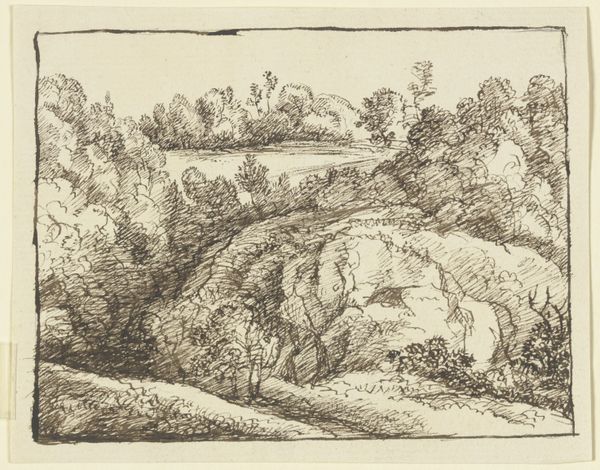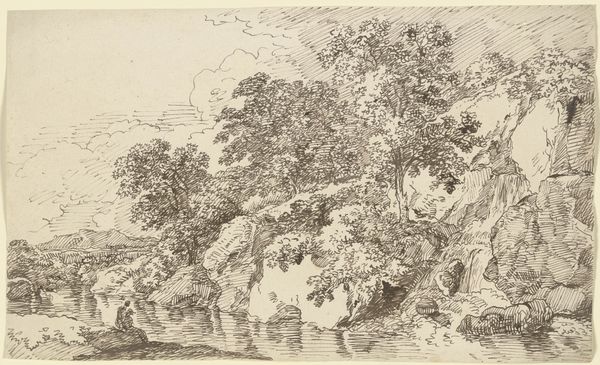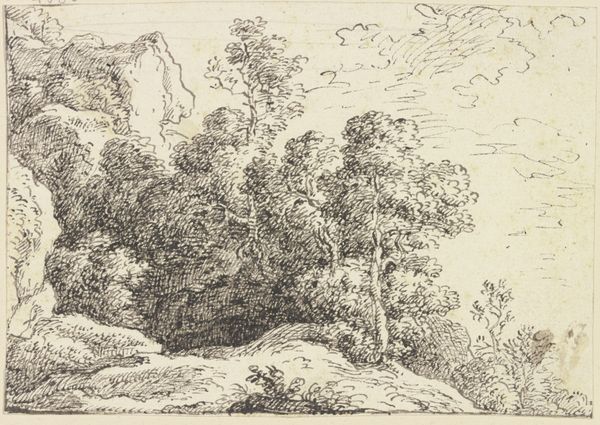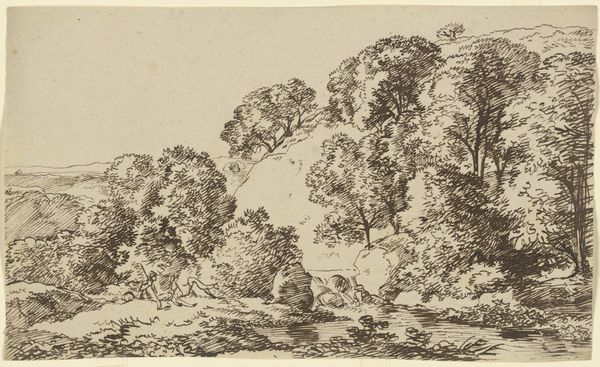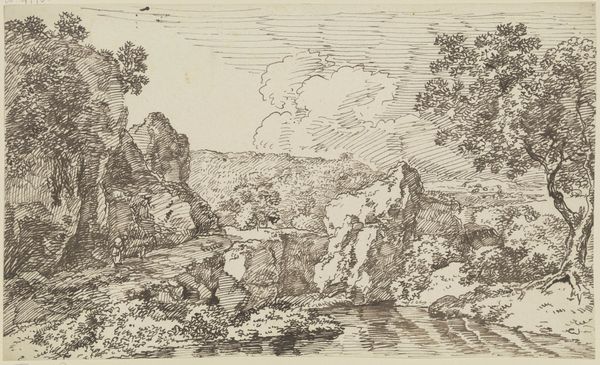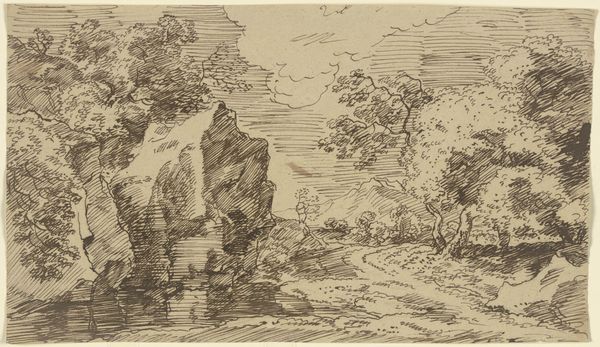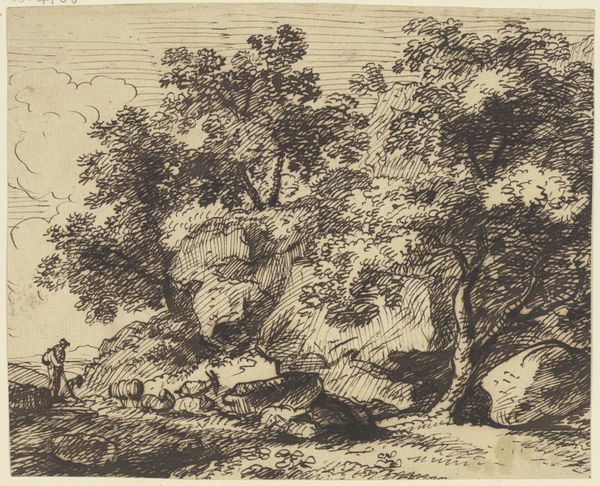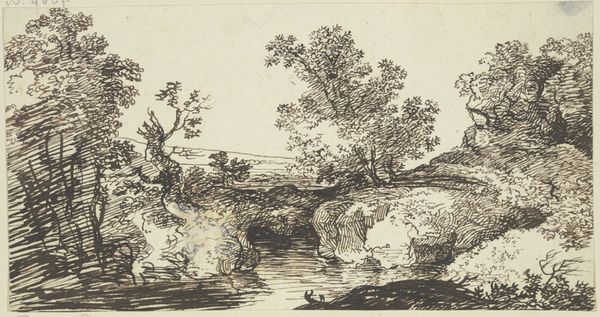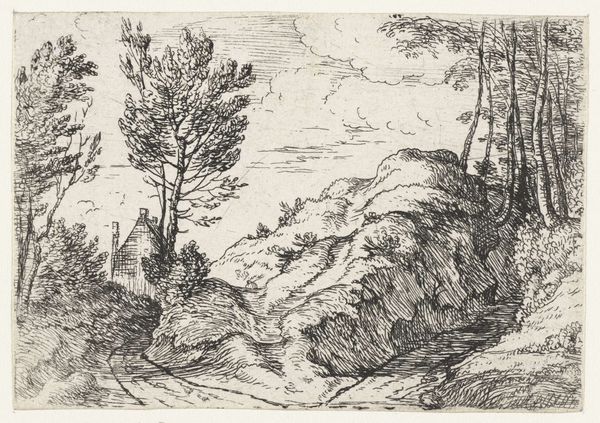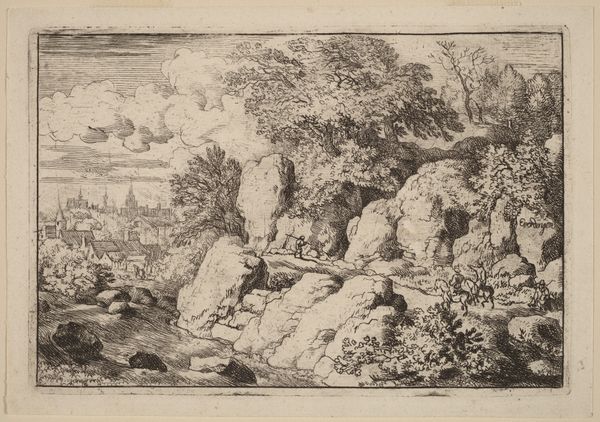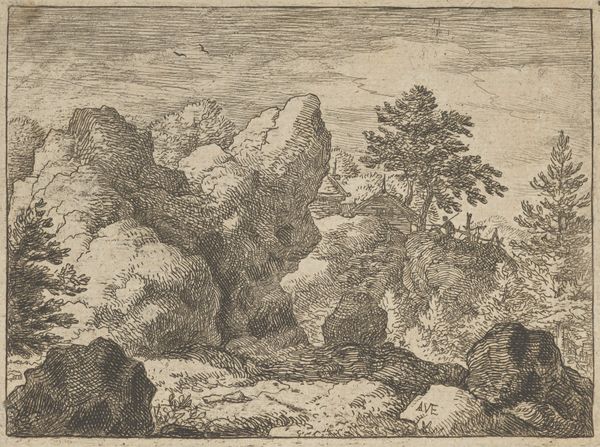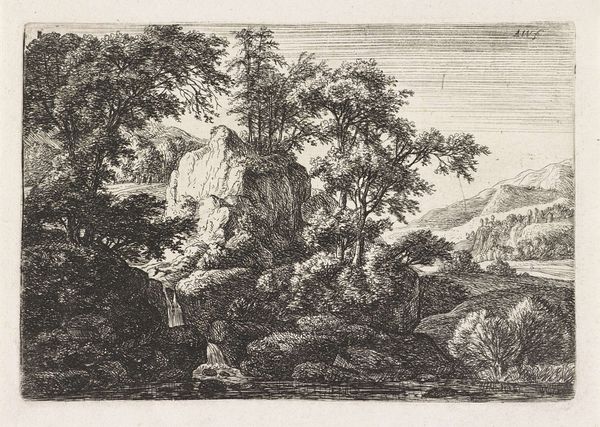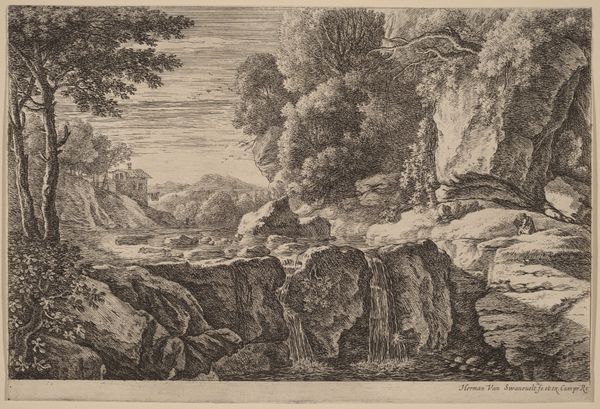
drawing, dry-media, ink, pencil
#
drawing
#
pen sketch
#
pencil sketch
#
landscape
#
dry-media
#
ink
#
romanticism
#
pencil
#
line
Copyright: Public Domain
Curator: Let’s turn our attention to "Rocky Landscape," a drawing here at the Städel Museum, attributed to Franz Kobell. It appears to be a quick study using ink, possibly with some pencil under-drawing, depicting a rugged natural scene. Editor: Immediately, I am struck by the density of the marks. There's an almost feverish quality to the hatching, a real urgency in capturing this vista, like the artist might be running out of time or perhaps the light was changing rapidly. It’s certainly dramatic! Curator: You’ve hit upon a key element. Kobell and his contemporaries were deeply involved with the changing aesthetics of landscape. We see this push towards more direct observation of nature that contrasts with the idealised classical landscapes of earlier periods. Editor: This isn’t about neat, composed views for wealthy landowners, is it? There’s an implied roughness here, which makes me consider how access to the wild landscape was, and continues to be, socially stratified. The right to roam and encounter the sublime wasn't, and isn't, universal. Curator: Absolutely. Kobell, as a draughtsman, moved within circles where these issues were actively debated and the depiction of land became very significant. He lived during a time of considerable socio-political change; his work embodies, in some ways, the democratising gaze upon nature. He was an influential figure who made quite a few drawings that are held by this museum, demonstrating an increasing value for such direct records of personal experience and the outdoors. Editor: I am looking more closely now and I see what looks like a figure to the left – tiny but there! Is this about humanity in harmony, dwarfed, or in conflict with nature’s majesty? Does their scale emphasize the powerlessness of man, of viewers? Curator: Indeed, a small figure appears nestled in the valley. I would argue its inclusion reflects the broader romantic impulse towards solitary contemplation, positioning man as part of rather than master over the landscape. A reflection, perhaps, on his era. Editor: I see a sense of transience too. This landscape will alter over centuries – eroded by weather, reshaped. And how do these scenes stand as silent witness to societal events – battles waged on fields that become artworks centuries later… It's thought-provoking. Curator: I agree; it becomes an object of contemplation. A study by Kobell may at first seem unassuming, but offers so much to think about when placed within the historical and social moment. Editor: Ultimately, looking closely helps to unpack this work. I see much in this intense record, and how it mirrors social relations of nature across the ages.
Comments
No comments
Be the first to comment and join the conversation on the ultimate creative platform.

